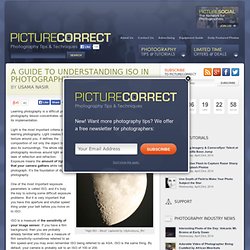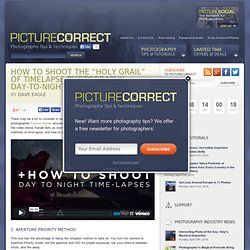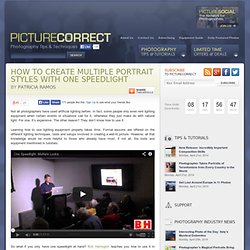

A Guide to Buying Used DSLR Gear. This article is the second part of the previous article titled “Pro Camera Gear on a Student Budget“, and contains some advice for what you should do once you find a good deal and have arranged a meeting with the seller.

I personally consider purchasing used gear on craigslist to be a much better route than other services (i.e. eBay), since you can check out the gear personally and walk away from the deal if anything doesn’t seem right. Pro Camera Gear on a Student Budget. My first DSLR camera was a Canon 20D that my parents purchased for me as a graduation present back in August of 2005.

We went to the store expecting to purchase the camera for $1,599, but found that it was selling for only $1,299. Boy was I excited. Looking back, I consider purchasing that 20D the worst photo-related decision I’ve ever made. When other photographers see some of the lenses I own (i.e. 24-70mm, 16-35mm), they often wonder how I can afford such expensive gear. How_to_hold_a_camera.jpg (1500×1061) Learn all about Exposure Metering Modes. Learn all about Exposure Metering Modes The first thing you need to master with your camera – besides how to load the memory card – is how to measure the light on the subject that you are photographing.

DSLRs have a built-in TTL (Through-The-Lens) light meter, which measures the ambient or reflective light on the subject. The TTL meter needs to become your new best friend when it comes to understanding digital photography and properly exposing a photograph. Mastering this basic necessity will catapult your photos to the next level. Understanding White Balance in Digital Photography.
Color Temperature To understand the concept of White Balance, you need to first understand the concept of color temperature.

Color temperature is a characteristic of visible light. It provides a method of describing these characteristics and is measured in Kelvin (K). A light having higher color temperature will have more blue light or larger Kelvin value as compared to lower light, which has a smaller Kelvin value. The following table shows the color temperature of various sources of light. Www.lightstalking.com/ltr/LTR.pdf. Free Downloadable Guide: Black and White Landscapes: How to Capture a Proper Tonal Range. Free Downloadable Guide: A Photographer's Guide to Depth of Field. A Guide to Understanding ISO in Photography. Learning photography is a difficult process that requires a lot of patience and practice.

This photography lesson concentrates on the basics of exposure, its definition, importance, and finally, its implementation. “High ISO – Moon” captured by ‘citylovesyou_ffm’ Light is the most important criteria in learning photography. Light creates the texture around you. It defines the composition of not only the object but also its surroundings. One of the most important exposure parameters is called ISO, and it’s truly the key to solving some difficult exposure problems. ISO is a measure of the sensitivity of your image sensor. Now, for the sake of example, I am going to say that I don’t have a tripod here. So what I am going to do is increase the ISO on my camera. Photographing Cityscapes. Capturing Night Signs When photographing signs at night, one of the most important factors is light metering.

The combination of a bright sign and a dark background can confuse the camera, leaving you with an under or over exposed image. You need an accurate metering mode that you can control, so choose spot metering and choose a mid toned area for a balanced shot (in this case the red lettering). Lightning Photography Tips. Find a Good Location When photographing lightning, it’s important to realize that the conditions you are shooting in are unpredictable and dangerous, and there will always be an element of chance and luck involved.
What to Teach Your Kids about Photography. How to Select the Perfect Nikon DSLR for Your Needs. Photographing 4th of July Fireworks. Once a year, Americans are allowed to celebrate a holiday in a manner befitting the importance of the day.

Of course, I am referring to the 4th of July and celebrating with out-sized fireworks shows! “Celebration of Light 2004″ captured by Ray Lee. (Click image to see more from Ray Lee.) To an enviable degree, today’s point-and-shoot cameras, and even some cell phones, can capture the “bombs bursting in air.” How to Shoot the “Holy Grail” of Timelapse Photography: Day-to-Night Sequences. There may be a lot to consider in setting up a day-to-night or night-to-day time lapse, but photographer Preston Kanak assures us that they aren’t as difficult to achieve as it may seem.

In the video below, Kanak tells us everything we could possibly want to know about three different methods of time-lapse, and how to work with the files in post: 1. Aperture Priority Method This one has the advantage of being the simplest method to take on. You turn the camera to Aperture Priority mode, set the aperture and ISO for proper exposure, set your interval between shots, and fire away. 10 Photography Assignments to Stimulate Your Creativity. This article will provide you with 10 photography self-assignments that you can use to get your own creative juices flowing.

They are designed to help you grow in skill as a well-rounded photographer while helping you build your portfolio at the same time. Many of these projects are best executed over a period of time, rather than in a single session. “Waiting” captured by Jack Nobre (Click Image to See More From Jack Nobre) 1. The Park Bench. 2. How to Create Multiple Portrait Styles with One Speedlight. Not all photographers have used artificial lighting before.

In fact, some people only even rent lighting equipment when certain events or situations call for it, otherwise they just make do with natural light. For one, it’s expensive. Exposure Stacking Tutorial in Adobe Photoshop. Exposure stacking is the process of taking multiple photos with different types of lighting and exposure settings, then blending them together into one photograph. This technique is used frequently in night photography, when a photographer wants to capture an object in the foreground while also capturing the night sky.
Because the lighting of the foreground object obscures visibility of the sky, many different photos must be taken with various lighting and exposure settings to achieve this effect. In the following video, Russell Brown explains the process of exposure stacking in Adobe Photoshop CS6: Russell captured each photo using a Canon 5D Mark II, an interval exposure unit, a strobe light and a tripod. Each photograph was taken in the exact same position. After importing each photo into a single Photoshop document as layers, you can then select all layers and change the blend mode to “Lighten.” Using HDR Photography for Panoramas & 360 Virtual Tours. What is HDR? High dynamic range (or HDR) photography is a technique that allows a photographer to take the same image at different exposures and then blend them together to produce one image that features the best exposed parts from each of the images.
For a virtual tour this is particularly useful, as most virtual tours rely on a 360 degree perspective. Often you will be shooting both away from and into a light source. Usually this would mean that you would have to compromise between the two and potentially have dark patches that are underexposed on one side and light patches that are overexposed on the other. Using HDR you can shoot at three or more exposure levels–low, medium, and high–and then blend them together to create the perfect panorama. “La caverne aux livres” captured by Alexandre Duret-Lutz on Flickr.